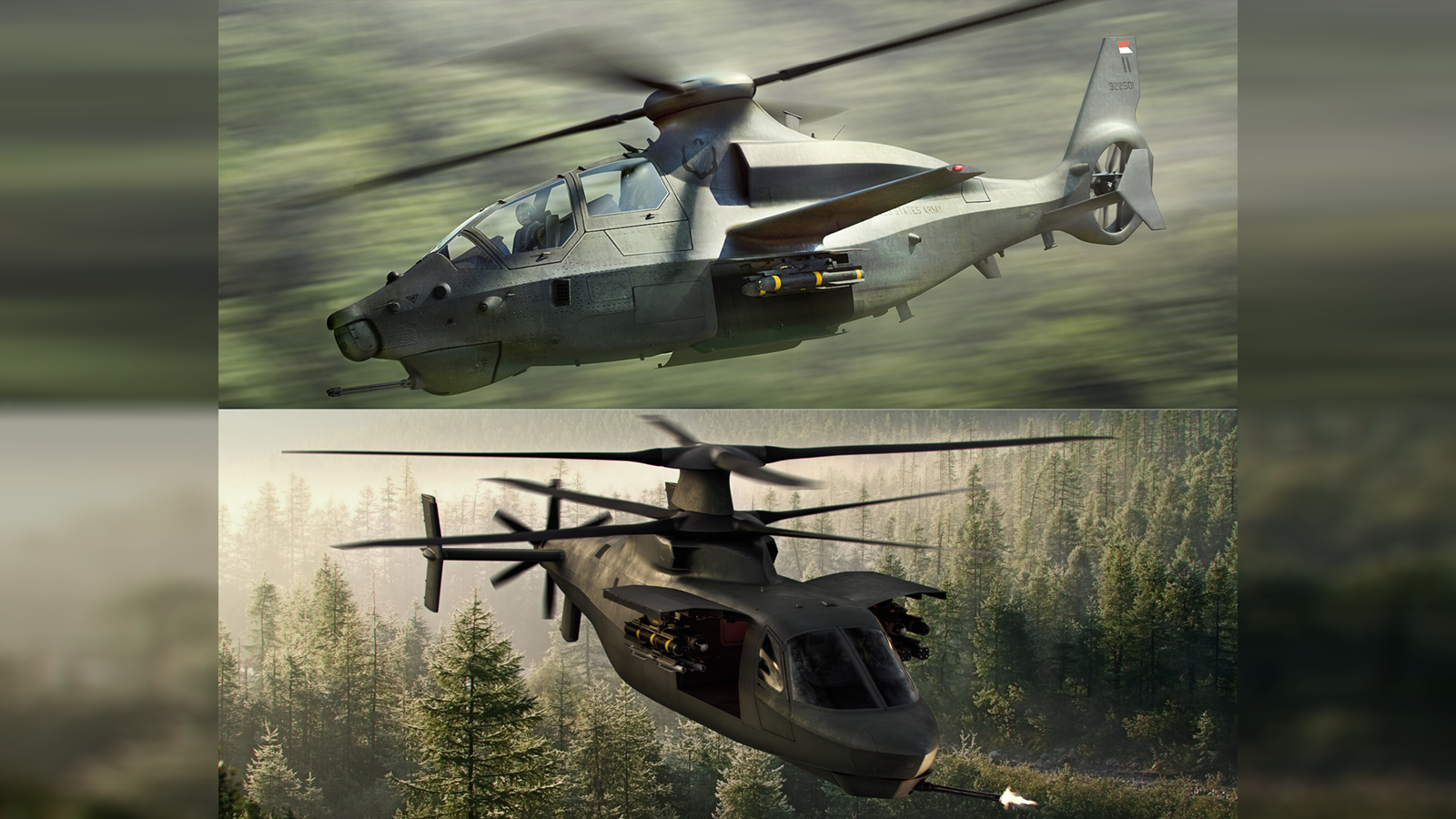
The two contenders for the Army’s Future Attack Reconnaissance Aircraft (FARA): The Bell 360 Invictus (top) and the Sikorsky Raider-X (bottom). (Army graphic, modified)
WASHINGTON — Industrial base concerns played a role in the Army’s decision to radically change its aviation modernization plans, as two legacy helicopter production lines would have gone cold in five years under its previous strategy, the Army’s top acquisition official told lawmakers today.
The Army canceled the Future Attack Reconnaissance Aircraft (FARA) program in February, arguing that the procurement of a bespoke reconnaissance helicopter was no longer viable when small drones have become ubiquitous on battlefields such as Ukraine.
As part of the savings from the cancellation, the Army said it would buy more UH-60M Blackhawks from Lockheed Martin Sikorsky and CH-47F Block II Chinooks from Boeing — the two lines in danger of phasing out by 2030 if the Army’s original plan had come to fruition, according to Doug Bush, the Army’s assistant secretary for acquisition, logistics, and technology.
“The conflict in Ukraine has reinforced the importance of the U.S. having a robust industrial base that is equipped to respond to the demands of the battlefield, the nation’s stockpiles, and the needs our allies. In light of these lessons learned, the Army determined the previous path carried too much long-term risk,” said Bush in written testimony to the House Armed Services’ tactical air and land subcommittee.
The FARA cancelation was part of a wider overhaul to longstanding Army aviation plans, which also saw the service announce the end of UH-60 V Black Hawk production in fiscal 2025 due to cost growth, shelve plans to move General Electric’s Improved Turbine Engine into production, and sunset the Shadow and Raven drones.
The service will continue to develop the Future Long-Range Assault Aircraft with Textron, and make additional investments in unmanned aerial technologies, the Army announced at the time.
Democrat Rep. Joe Courtney of Connecticut pressed Army officials on how FARA’s cancellation would impact the industrial base, noting that Sikorsky already employs about 600 engineers in his home state on its competitor for the FARA program, known as Raider X, which was competing against the Bell-Textron 360 Invictus.
“It’s like the Hunger Games out there right now for anyone with an engineering degree…can you talk through how you’re going to try to preserve that [engineering expertise]?” Courtney asked.
Bush responded that most of the funding that is being shifted as a result of the changes will remain in the aviation portfolio, and that the fiscal 2025 budget will show an additional investment in Black Hawk research and development funds.
“Engineers working on manned aircraft, we hope over time can also come to work on unmanned aircraft,” he said. “We still need engineering talent.”
Rep. Rob Wittman, a Virginia Republican who chairs the House Armed Services’ tactical air and land subcommittee, told reporters in a roundtable earlier today that he didn’t understand how the Army made a “180 degree turn” on FARA — one of the service’s biggest aviation priorities — and wanted to hear officials lay out what technologies needed to be developed to fulfill the Army’s reconnaissance mission in the future.
“Expending $2 billion for a program that is now going [in the] complete opposite direction is a problem,” he said. “We want the Department of Defense to be innovative and creative. We want them to take risks, but we also want them to be able to intervene much earlier in the process.”
New Jersey Rep. Donald Norcross, the subcommittee’s top Democrat, noted that FARA is the Army’s third failed attempt at developing a replacement to the OH-58 Kiowa Warrior reconnaissance helicopter.
“I guess the question we need to answer today is what has changed, particularly over the last year?” he said.








